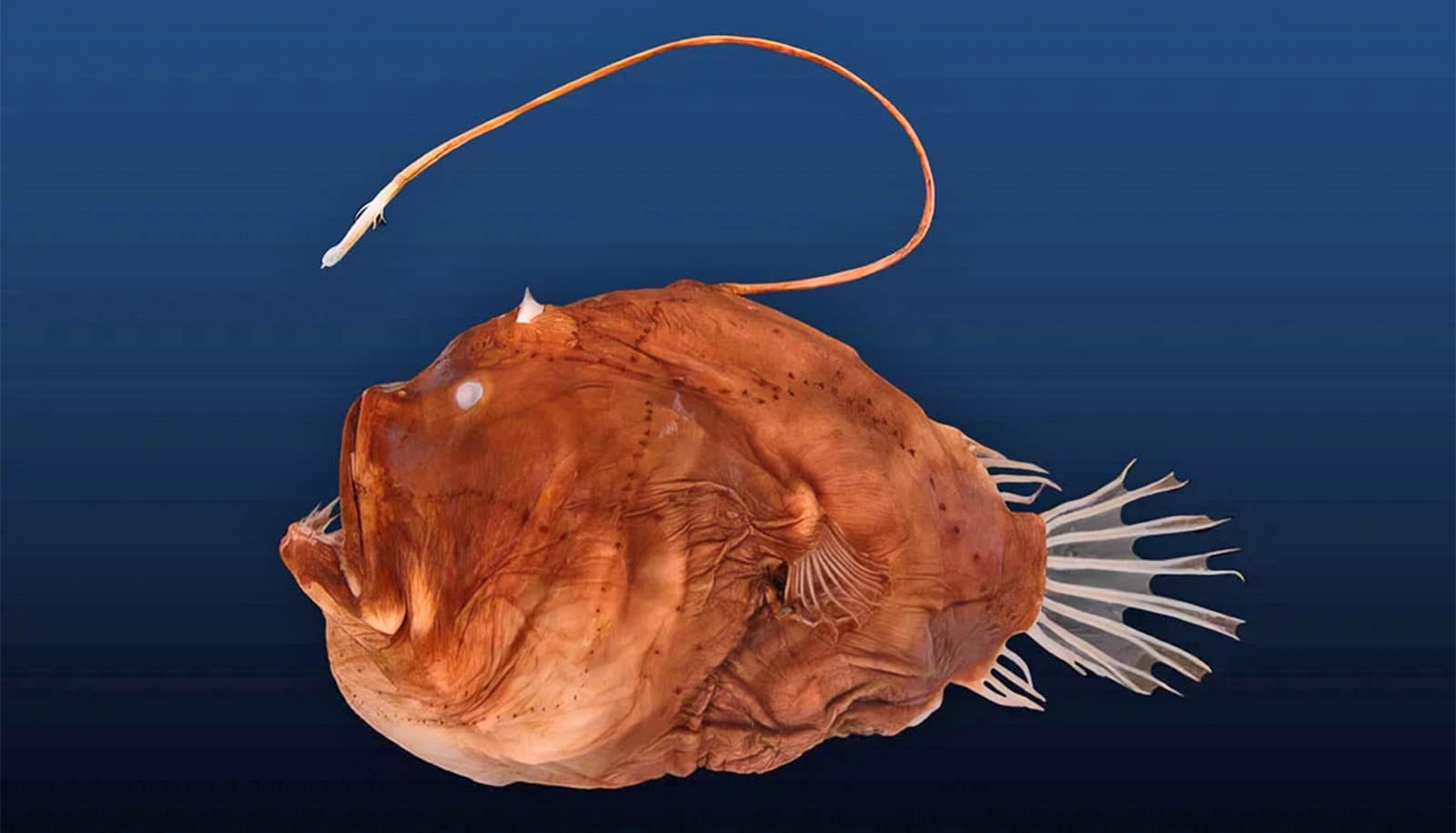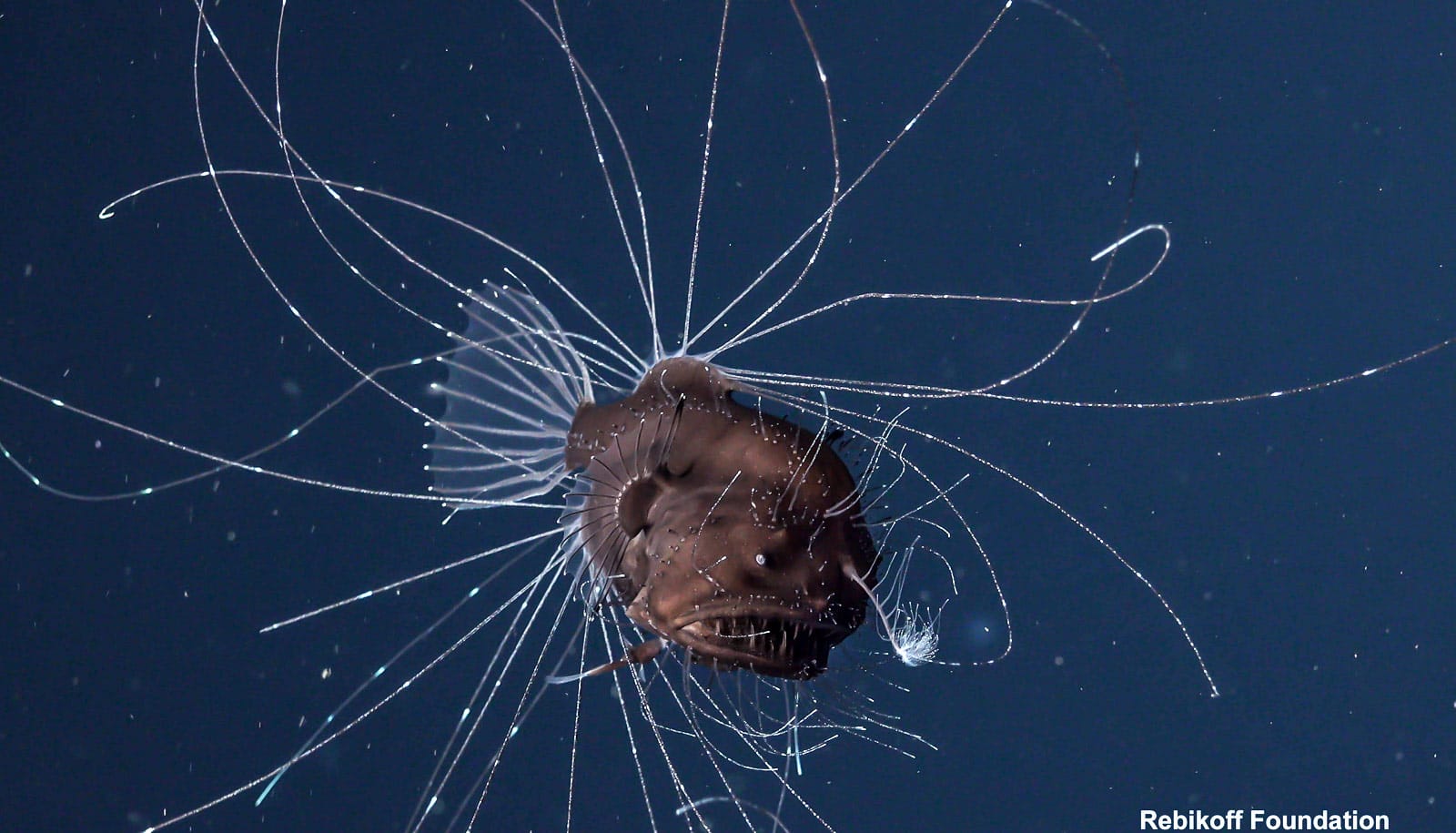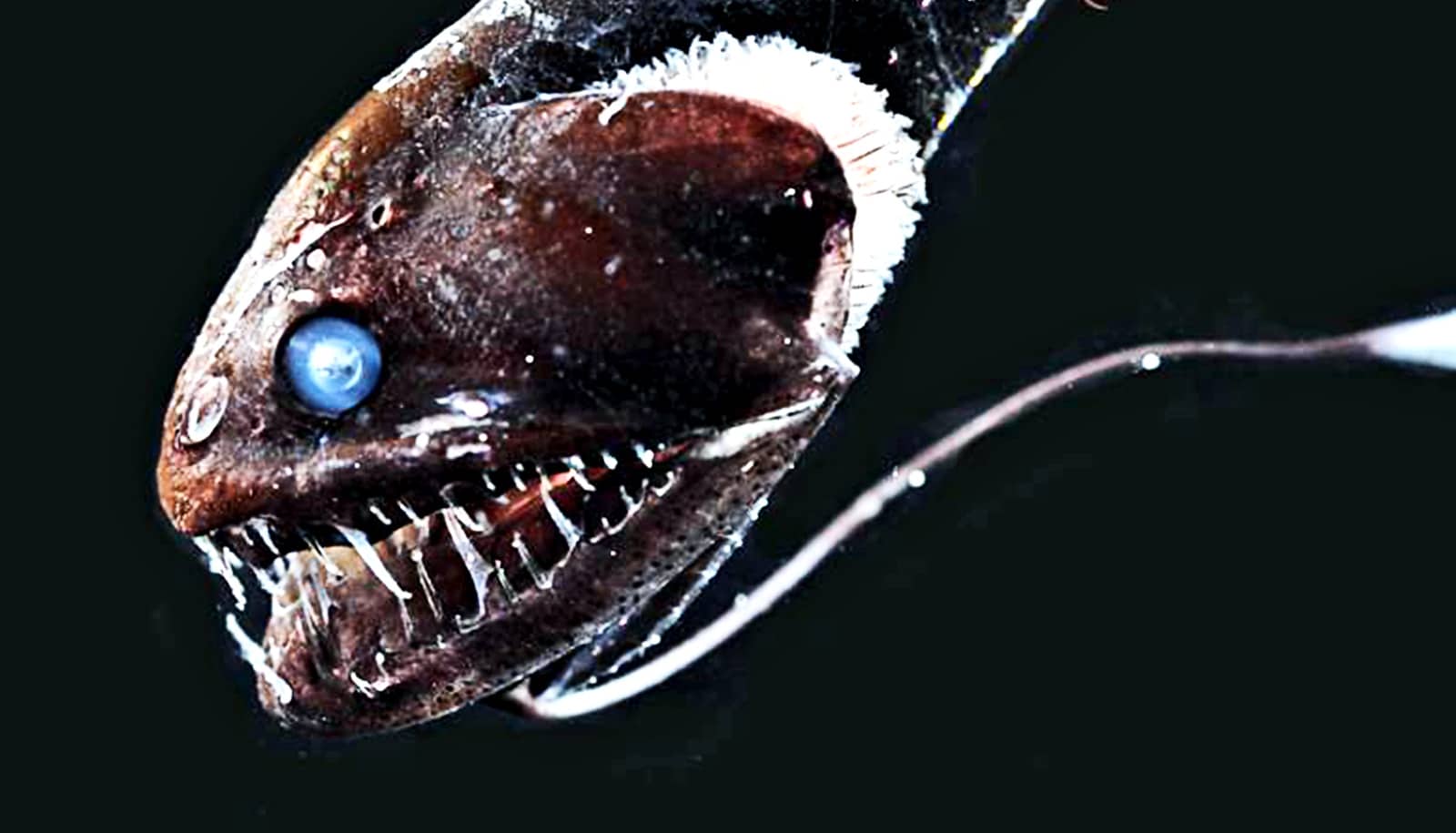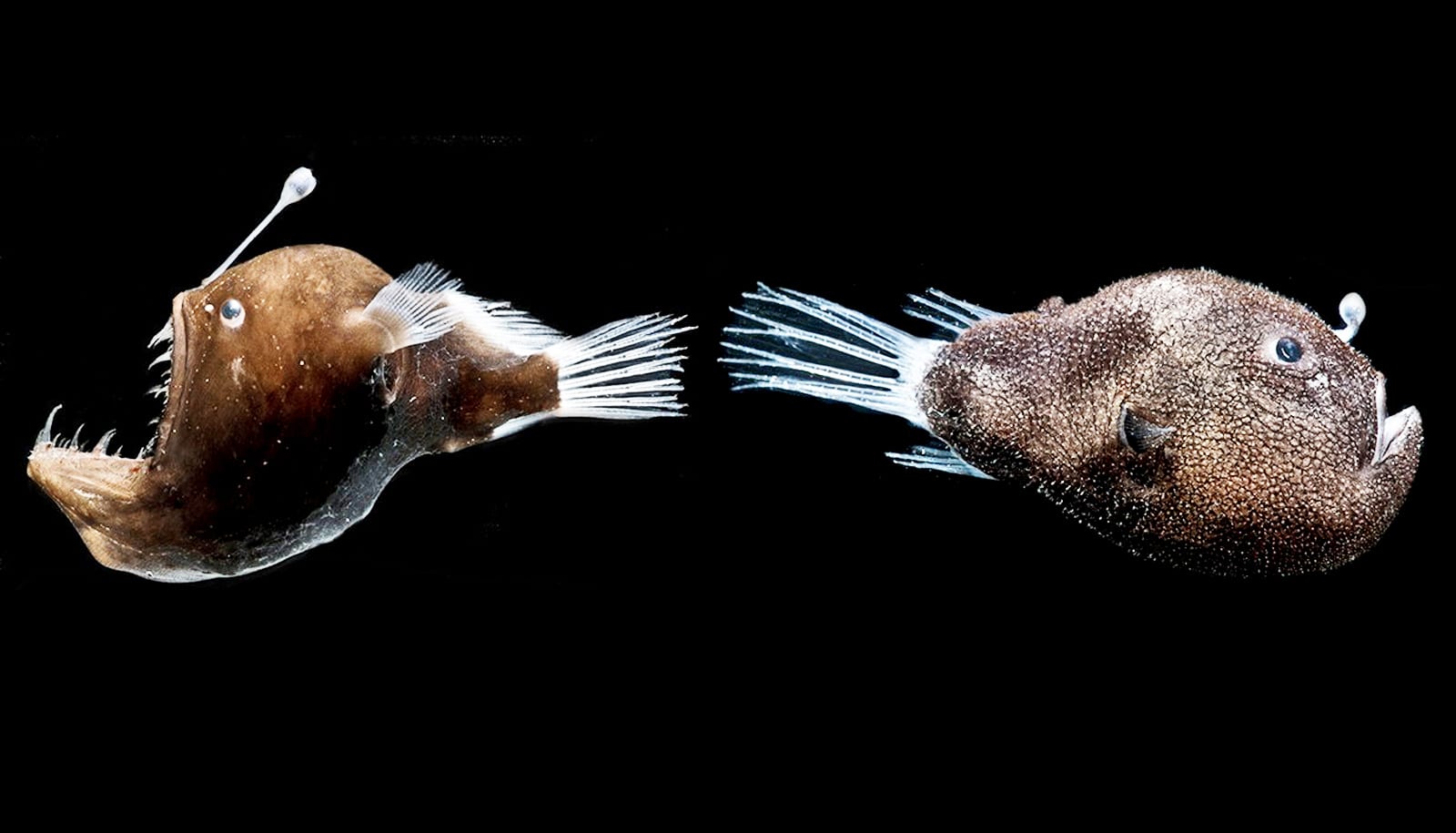A new study illuminates the evolution of deep-sea anglerfish with a focus on the development of their unique (and somewhat unsettling) mating routine.
As the planet’s most expansive ecosystem, the deep sea can be a tough place to find a mate. Though, scientists say, some deep-sea anglerfishes evolved a unique method of reproduction that ensures that once they land a partner in the vast open waters, they remain latched for life.
These anglerfishes, called ceratioids, reproduce through sexual parasitism, in which the tiny males attach to their much larger female counterparts to mate.
In some species, the males bite the females and then release once the mating process is complete. In others, the male permanently fuses to the female. In a process called obligate parasitism, the male’s head dissolves into the female and their circulatory systems merge. He transforms into a permanent sperm-producing sexual organ.
In a new study in the journal Current Biology, Yale researchers examined how sexual parasitism works in synergy with other traits associated with the fish to influence the diversification of anglerfishes, an animal that is found throughout the oceans and whose name is inspired by the fishing rod-like appendage females use to lure prey.
Understanding the evolution of sexual parasitism has implications that could one day inform advances in medicine, according to the researchers.
Better understanding how deep-sea anglerfishes lost adaptive immunity could one day contribute to advances in medical procedures, such as organ transplants and skin grafting.
Using genetic data from the genomes of anglerfishes, the researchers showed how complex features—such as sexual parasitism—assisted some anglerfish groups in transitioning from roaming shallow habitats, such as coral reefs, to swimming in the dark, open waters of the “midnight zone,” the deep-sea ecosystem where sunlight cannot penetrate.
“People tend to have single-trait explanations for why a group of animals can thrive in a given ecosystem, but in most living things, it seems that several distinctive innovations work synergistically to exploit new habitats,” says Chase D. Brownstein, a graduate student in Yale’s ecology and evolutionary biology department and the study’s co-lead author.
“We found that a cascade of traits, including those required for sexual parasitism, allowed anglerfishes to invade the deep sea during a period of extreme global warming when the planet’s oceans where in ecological upheaval.”
For the study, the researchers reconstructed the evolutionary history of the deep-sea species. They demonstrated that the rapid transition of ceratioid anglerfishes from benthic walkers, which use modified fins to “walk” the ocean floor in the shallows, to deep-sea swimmers occurred 50 to 35 million years ago during the Paleocene-Eocene Thermal Maximum, a period of high global temperatures that induced extinction throughout the oceans.
Ultimately, the researchers were unable to infer a clear evolutionary tree for deep-sea anglerfishes because the various lineages diverged from each other so rapidly, leaving relationships among lineages unresolvable, Brownstein says. But they found that the origins of sexual parasitism coincided with anglerfishes’ transition to the deep sea, although they could not determine which of the two forms of parasitism—temporary attachment or obligate parasitism—first occurred, Brownstein says.
Multiple traits evolved simultaneously to enable sexual parasitism. For example, ceratioids needed to evolve extreme sexual dimorphism with large females and miniature males. They also needed to shed their adaptive immunity—the system of specialized immune cells and antibodies that attack and eliminate pathogens—so that the female hosts’ bodies do not reject the parasitic male.
By reconstructing the evolutionary history of key genes involved in adaptive immunity, the researchers learned that multiple groups of deep-sea anglerfishes convergently degenerated their adaptive immunity, enabling sexual parasitism. And although sexual parasitism was evolving as deep-sea anglerfishes moved into the deep sea, they concluded that it is not necessarily the key trait driving species diversification among ceratioids. However, it did enable anglerfish to succeed in the midnight zone, Brownstein says.
“Sexual parasitism is thought to be advantageous to inhabiting the deep sea, which is Earth’s largest and most homogenous habitat,” he says. “Once individuals find a mate in that vast expanse, obligate sexual parasitism allows them to permanently latch, which seems to be a critical aid to the evolution of deep-sea anglerfish.”
The research has potential implications on human health, says senior author Thomas Near, professor of ecology and evolutionary biology at Yale and Bingham Oceanographic Curator of Vertebrates at the Yale Peabody Museum.
“Better understanding how deep-sea anglerfishes lost adaptive immunity could one day contribute to advances in medical procedures, such as organ transplants and skin grafting, where suppressing immunity is crucially important,” he says. “It’s an interesting area for future medical research.”
Additional coauthors are from the University of North Carolina at Charlotte; Yale; the US Department of Natural Resources, Marine Resources Division; and the University of Chicago.
Source: Yale University



